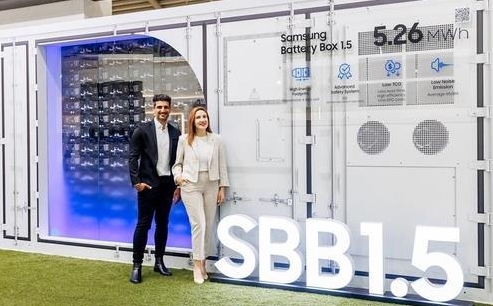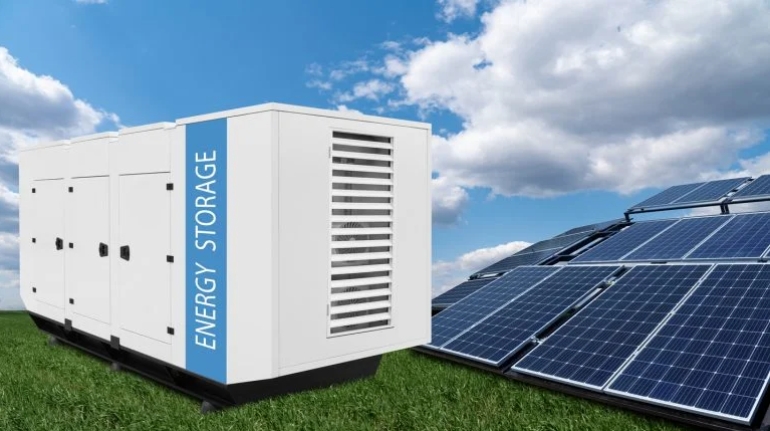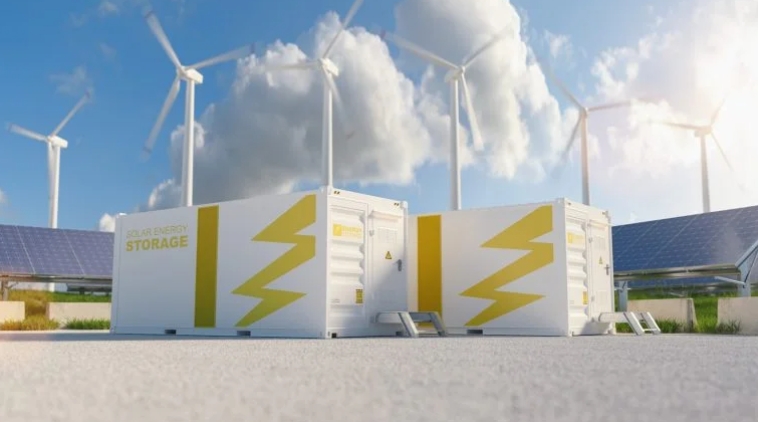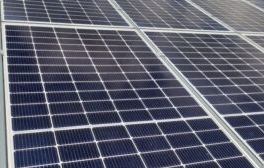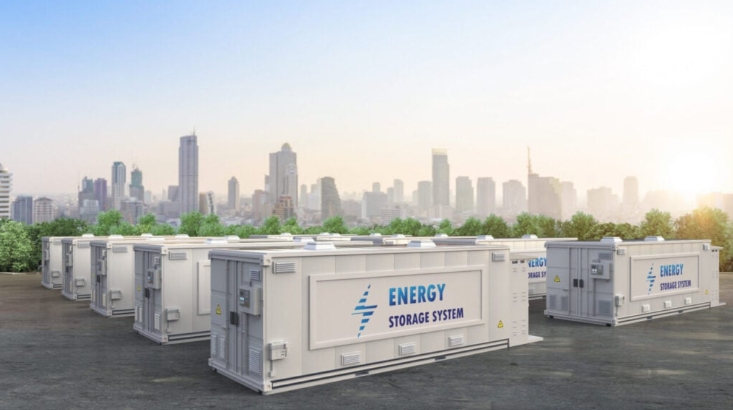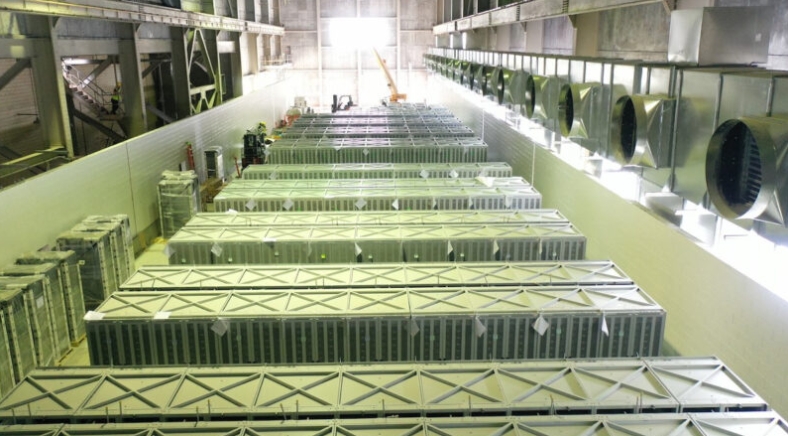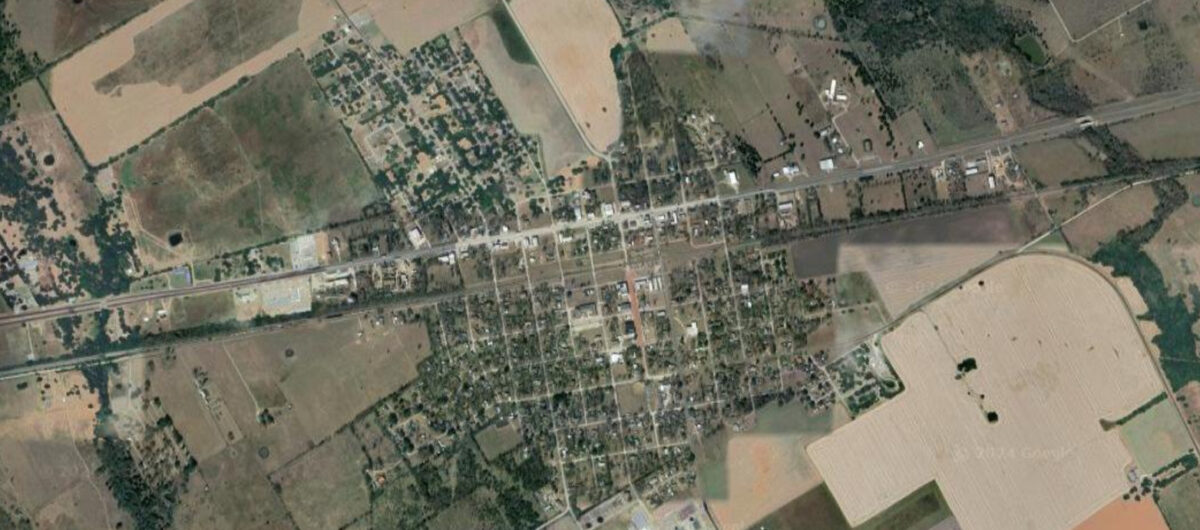The system makes it possible to earn revenue through electricity market transactions during normal operations, in addition to providing power to blackout areas or the areas that outages are assumed, as an independent power source, during an emergency such as natural disasters and planned outages. It is the first time in the U.S. and Japan that a microgrid has been operated on a commercial distribution network with the storage batteries as the main power source, bracing for a power outage.
The results of this demonstration project could be applicable to the cases with high potential demand both in Japan and abroad in the future, such as microgrids with solar and wind power facilities constructed for off-grid areas and 100% renewable energy supply is required for the islands where the transportation cost of power generator fuels is expensive.
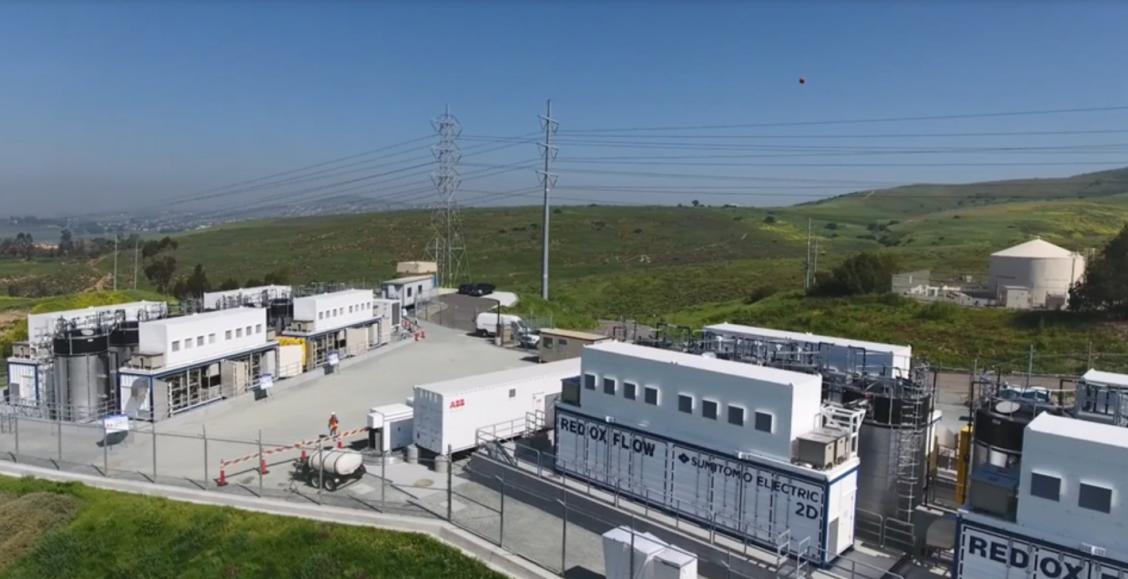
1.Overview
The U.S. state of California has enacted Senate Bill 100, aiming to use only clean greenhouse gas-free energy sources by 2045, and is promoting the introduction of energy storage facilities as a solution to the problem of deteriorating electricity quality due to the mass introduction of renewable energy. In addition, California has been increasingly experiencing emergency planned and rotating power outages recently as a countermeasure to wildfires and rapid increase of air conditioning load during extremely hot weather, which is becoming a social issue. Thus, in the event of a power outage, the consumers like data centers supply electric power from storage batteries only to the circuits connected to specific distribution boards (critical load distribution boards) as power outage countermeasures. But countermeasures against power outages to cover wider areas and strengthening the power system resilience are also requested.
With this background, NEDO commissioned Sumitomo Electric in September 2015 and proceeded with the demonstration project*1 in San Diego, utilizing redox flow batteries (RF batteries)*2, which are stationary storage batteries with long service life and are suitable for the large-scale use.
RF batteries have an advantage in that they do not experience degradation due to factors like charging/discharging nor by the number of cycles and makes it easier to measure the remaining energy in batteries in real time. The project has been developing bidding strategies and conducted a demonstration which could increase profits in both the energy market (electricity trading market) and the ancillary services*3 market and also made it possible to select a highly flexible bidding pattern for electricity trading that was already initiated with a local grid operator (independent system operator) in December 2018*4.
In 2021, NEDO and Sumitomo Electric decided to additionally demonstrate the operation*5 of a microgrid on the distribution network, utilizing RF battery facilities as a countermeasure against planned and rotating power outages that are becoming a problem in the state and commenced the successful operation in October. It is the first time in the U.S. and Japan that a microgrid has been operated on a commercial distribution network with storage batteries as the main power source, bracing for a power outage*6.
NEDO and Sumitomo joined GO-Biz and SDG&E to issue an additional joint press release which can be accessed at :
2.Our Achievements
(1) Enhancement of grid resiliency by microgrid operation with VRF battery has been validated Microgrid with VRF battery (8MWh) has successfully provided electricity to 66 real residential customers, as stand-alone power source, through distribution network on the assumption that they are disconnected from the grid during power outages because of natural disasters etc.
Although both electricity demand and power output of solar systems in the microgrid are always fluctuating, the VRF battery could stabilize the voltage and frequency of the distribution lines by charging/discharging the power required to sustain supply-demand balance.
We have confirmed that it is possible to stably shift from a grid-connected state to a microgrid*7 in either a black-start transition which is to boot the storage batteries during a power outage, or a seamless transition in which the consumers don’t notice a power outage.
The above-mentioned demonstration results validated that we could supply power to foreseeable blackout areas as a stand-alone power source within a microgrid in times of an emergency such as planned outages and natural disasters, while earning profits through power transactions with a grid operator during normal times.
(2) Performance of the VRF battery through the demonstration project has been validated The results of the performance validation through the demonstration project are as follows:
● We verified that the profitability in electricity market transactions could be improved by applying the highly flexible bidding algorithm as well as by taking advantage of the feature of RF battery that neither of the charge/discharge pattern, the number of cycles, nor the operational range of SOC (State of Charge) could become the factor to accelerate battery degradation.
● The decrease in the energy capacity of RF battery in about four years’ time is very small, even when the battery is charged and discharged in the range from SOC 0% to 100% continuously with steep power changes in such an operation like the California Independent System Operator (CAISO). The expected capacity even after 20 years, based on the demonstration results, indicates it is expected to keep the rated energy capacity (8MWh).
● We have verified not only the absence of significant battery degradation, but also the high reliability of the system. During the four years of demonstration operations, there were no major system failures and the high availability rate (99%)*8 of the system was confirmed.
The results of this demonstration project could be applicable to the cases with high potential demand both in Japan and abroad in the future, like when microgrids with solar and wind power facilities are constructed for off-grid areas or 100% renewable energy supply is required for the islands as the transportation cost of power generator fuels is expensive.
By disseminating the technology developed in the project, NEDO and Sumitomo Electric will contribute to enhancements of grid resiliency, and realizing the carbon neutral society by both increasing the renewable energy and decreasing greenhouse gas emission.
[Notes]
*1 Project
Project title: International Demonstration Project to Prove Japanese Technology for Improved Energy Consumption Efficiency/Demonstration Project Testing Storage Battery Operation for Both Electricity Transmission and Distribution in California, USA
Project period: FY2015 to FY2021
Link: https://www.nedo.go.jp/english/news/AA5en_100015.html
*2 Redox flow battery (RF Battery)
A RF battery system consists of cells for battery reaction, tanks for storing active material, pumps, and pipes for circulating the active material. In RF Battery, the output (kW) and capacity (kWh) parts are independent of each other, allowing for appropriate output power and energy capacity design according to application.
The charging and discharging reaction cause a change only in the valence of the ions in electrolytes, which prevents degradation of the electrodes and the active material, making it suitable as a long-life large storage battery. In addition, because it can operate under normal temperatures and is composed of non-combustible or flame-retardant materials, the possibility of a fire with the batteries is extremely low.
As the state of charge is monitored accurately, the batteries ensure maximum safety in system operations.
*3 Ancillary services
Technical and operational schemes to maintain power quality. They include power balance monitoring, operating grids, and voltage/frequency regulation. In the past, utility companies were in charge of ancillary services. But in recent years, some functions of ancillary services have been identified, monetized, and built into the markets.
*4 Already initiated with a local grid operator (independent system operator) in December 2018
Reference:NEDO news release, December 18, 2018 “Initiating Redox Flow Batteries into the U.S. Wholesale Power Market―Demonstrating the economic potential of storage batteries―”
Link: https://www.nedo.go.jp/english/news/AA5en_100399.html
*5 Decided to additionally verify the operation
Reference: NEDO news release, January 22, 2021 " NEDO Extends Redox Flow Battery System Project to Conduct an Additional Demonstration of a Microgrid as a Solution to Power Outages in California”
Link:https://www.nedo.go.jp/english/news/AA5en_100433.html
*6 It is the first time in the U.S. and Japan that a microgrid has been operated on a commercial distribution network with the storage batteries as the main power source, bracing for a power outage
Researched by Sumitomo Electric
*7 Stably shift from a grid-connected state to a microgrid
As an example of microgrid operation, the waveforms of the microgrid frequency and the output of the storage batteries (following the load) during microgrid operation with black start (starting the microgrid from a power outage, disconnected from the grid) are shown below. It was confirmed that the RF battery became a stand-alone power source and maintained a stable frequency by balancing supply and demand of the load in the microgrid.
